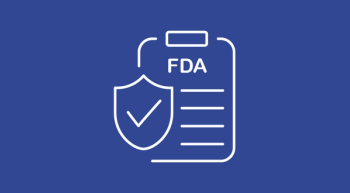
Zev Wainberg on Combination Chemotherapy Regimens in Metastatic Pancreatic Cancer
Zev A. Wainberg, MD, discusses the implications of the findings from the phase 3 NAPOLI 3 trial for patients with metastatic pancreatic ductal adenocarcinoma.
Combination chemotherapy regimens, such as the combination of liposomal irinotecan (Onivyde) plus 5-fluorouracil (5-FU), leucovorin, and oxaliplatin (NALIRIFOX), may serve as a more promising frontline option for patients with metastatic pancreatic ductal adenocarcinoma than gemcitabine and nab-paclitaxel (Abraxane), according to Zev A. Wainberg, MD.
Wainberg, who is a professor of medicine at UCLA and co-director of the UCLA Gastrointesinal Oncology Program, recently presented on the phase 3, randomized, open-label
“Fundamentally [what] we were trying to do here is provide clarity for the community about what’s the optimal frontline therapy regimen for metastatic pancreatic cancer,” he told Oncology Nursing News®, in an interview.
The final efficacy analysis demonstrated that the novel regimen inspired a clinically meaningful and statistically significant improvement in overall survival (OS) for these patients. At a median follow-up of 16.1 months (95% CI, 15.3-16.8), the median OS was 11.1 months for the 383 patients receiving liposomal irinotecan plus NALIRIFOX and 9.2 months (95% CI, 8.3-10.6) for 387 patients given nab-paclitaxel plus gemcitabine (HR, 0.83; 95% CI, 0.70-0.99; P = .04).1
In addition, the median progression-free survival between the 2 arms was 7.4 months (95% CI, 6.0-7.7) vs 5.6 months (95% CI, 5.3-5.8), respectively, (HR, 0.69; 95% CI, 0.58-0.83; P < .0001).
“This was the final analysis for efficacy,” Wainberg noted. “What we showed is that the OS was better in the NALIRIFOX regimen compared with gemcitabine/nab-paclitaxel by [approximately] 2 months—which is in line with what we would have perhaps expected if FOLFRINOX had been in studied in this context, which, unfortunately, has not been done.”
“What I think people might take home from that [data] is that gemcitabine/nab-paclitaxel may be inferior to combination chemotherapy regimens like FOLFIRINOX or NALIRIFOX, and moving forward perhaps, [may become] a second-line therapy regimen,” he added.
Wainberg noted that NALIRIFOX appeared to be a bit more tolerable than its parental FOLFIRINOX and may therefore represent a suitable springboard for drug development. He shared that he was particularly surprised by the low rates of peripheral neuropathy that were observed on the trial. However, he emphasized that there still is much work to be done in this space, as a 11-month median OS should still be “completely unsatisfactory” to providers and patients in the space.
“Our main takeaway is that [for patients with] an ECOG performance of 0 or 1, gemcitabine and nab-paclitaxel should probably be [used] in the second line,” he said. “More efficacious regimens, [such as] NALIRIFOX, should be [used] in the front line…in more patients with ECOG 0 or 1.”
Based on the findings of NAPOLI 3, the developer of the agent, Ipsen Biopharmaceuticals Inc, plans to file a supplemental new drug application seeking the approval of liposomal irinotecan plus NALIRIFOX in this patient population in the United States.2
References
- Wainberg ZA, Melisi D, Macarulla T, et al. NAPOLI 3: a randomized, open-label phase 3 study of liposomal irinotecan + 5-fluorouracil/leucovorin + oxaliplatin (NALIRIFOX) versus nab-paclitaxel + gemcitabine in treatment-naïve patients with metastatic pancreatic ductal adenocarcinoma. J Clin Oncol. 2023;41(suppl 4):LBA661. doi:10.1200/JCO.2023.41.4_suppl.LBA661
- Onivyde regimen demonstrated statistically significant improvement in overall survival in previously untreated metastatic pancreatic ductal adenocarcinoma. News release. Ipsen Biopharmaceuticals Inc. November 9, 2022. Accessed January 20, 2023.
https://bit.ly/3teF8cn
Newsletter
Knowledge is power. Don’t miss the most recent breakthroughs in cancer care.














































































